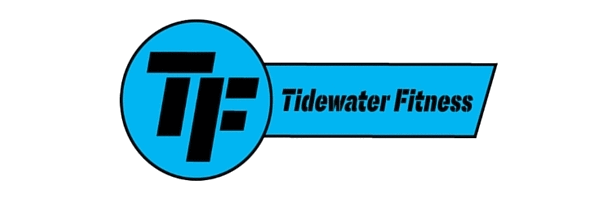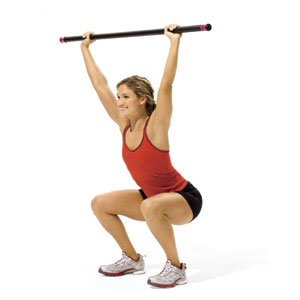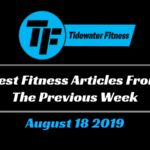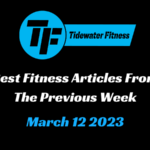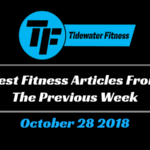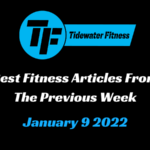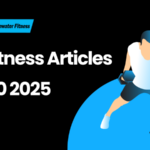According to google, the definition of an assessment is “the evaluation or estimation of the nature, quality, or ability of someone or something.” An assessment is typical in most industries today.
If you take your car to an auto shop because your check engine light comes on, they will need to do a thorough assessment to see what the cause of the problem is. This will provide them with a road map as to how they will fix the issue.
It’s the same in the fitness industry. People come from a variety of jobs, ages, backgrounds, etc. All of these things can govern how they will move and what they will be able to do in the gym.
As a trainer, it’s important to know these things so you can safely and effectively help others achieve their goals. More often than not, trainers will give the client a generic program with exercises they have no business doing.
The assessment process helps the them steer clear of this situation. It allows them to build a program that the client is capable of completing all while getting them the results they desire. That is why this process is so critical.
Another reason why the initial assessment is important is it allows you to see change within yourself. How can know if you are improving when you do not have a baseline?
As you move through your program, the trainer should re-evaluate to determine your progress every few weeks. Without the initial assessment, this wouldn’t be possible.
This allows them to determine what is working and what isn’t working. From this information, they can adjust the program to further your results.
Now that you know why an assessment is an important part of your progress, let’s talk about what types of things should be assessed. Many of these will require an experienced personal trainer. If you are already working with a trainer or considering it, these are the types of things they should be doing.
This is not an exhaustive list, but it will give you some idea to gauge whether a trainer is right for you. So let’s get started!
1. Movement Screening
Movement screening basically asks you to perform certain movements that you should be able to do with little resistance. However, as we get older and sit more it impedes our ability to perform some of these tasks.
These tests can be things like a squat, lunge, and push-up. They are not performed to only gauge your ability to do them, but also things like ankle mobility, hip mobility, shoulder mobility, and trunk stability.
Those measures can tell the trainer valuable information. If you do not have adequate shoulder mobility do you think you should be doing exercise where your arms are overhead? Absolutely not.
The reason being you will compensate to complete the exercise. If you do not have the mobility to get into the correct position, then you will have to compensate to get there.
Have you seen someone pressing a dumbbell overhead, while maintaining a huge arch in their back? There could be a few different reasons why, but one could be a lack of shoulder mobility. If they do not possess this, they have to arch their back to get the weight over head.
This is why movement screening should be a key piece to any assessment.
2. Range of motion (ROM)
You should have appropriate ROM at all your joints, especially those that are highly mobile (shoulder and hip). Think about running, swimming, reaching over head, reaching behind you. These two joints require a large degree of motion in order for you to perform these movements correctly and pain free.
You should also have a very similar ROM when looking at both sides. If there is a large difference, that could be an issue. This could also represent a positional issue at these joints.
For example, if someone lacks internal rotation at the hip (the capability of the femur to rotate towards the body) it could be related to the position of their pelvis.

Hip Internal Rotation
Photo Credit: http://www.scranton.edu/faculty/kosmahl/courses/gonio/lower/pages/hip-medial-inrot.shtml
Gauging one’s ROM at specific joints can provide insight as to what is happening on the inside of their body. Fixing these limitations could contribute to better movement and a future free of injury.
3. Heart Rate Measures
This is basically a measure of how fit someone is. There are couple of things you could do here.
Resting heart rate is a great place to start with. If your resting heart rate is high (above 60-65 beats per minute), your heart will be working hard to provide blood to your tissues.
This is not a good thing. As you begin exercising, your heart will start working even harder, which means you will fatigue much faster.
A high heart rate can also be indicative of a lot of stress. A high stress environment can cause an increased tone within certain muscles, which means those muscles are constantly “on” or feel tight.
For example, an office worker often has tight pectoralis minors because they sit hunched over all day. They would need to get these muscles to relax before lifting weights. If they don’t, it can be a source of pain and dysfunction.

Pectoralis Minor
Photo Credit: http://www.completenaturalcare.com/2014/02/28/autonomic-nervous-system-literally-pain-neck/
Heart rate recovery is a great test here as well. Not to go into too much detail, but this basically involves getting one’s heart rate up to a certain point and seeing how long it takes to recover to a certain point.
The faster your heart recovers, the more “in shape” you are. Here is a good article that shows you all the details you would need.
4. Body Measurements
For, those looking to lose body fat or increase muscle mass (which is usually everybody) this is a must. Body measurements allow you to track whether you see decreases or increases in different areas.
There are many things under the umbrella of body measurements. One that could be done is a circumference measure of the body and limbs. For example, the waist, hips, thighs, calfs, upper arms, and forearms can all be measured for circumference.
Another measure that can be done is a skinfold. The trainer essentially pulls the fat away from several areas of the body (abdomen, back of the arm, thigh) and determines how thick that measurement is.
Using certain formulas, the trainer can determine one’s body fat and muscle mass. This can sometimes be off by around 3-5%, but it is still a pretty accurate piece of equipment relative to its low cost.
Weight is another one. I believe people worry about weight way too much, but it can be used as a supplemental measure. It shouldn’t be abused, and people shouldn’t feel like they didn’t accomplish anything if they do not see any weight loss.
The body is very complex and I have seen clients who experienced no weight loss, yet saw inches lost all over the body. That is why it is important to take a lot of measurements and never live and die by the scale.
5. Isolated Muscle Testing
In the movement screen, many muscles are assessed at once so the trainer can see how they work together to help you accomplish a specific movement. With the isolated approach, the trainer looks a one or a couple muscles at the same time.
What I mean by this is, if someone comes in complaining of back pain one set of muscles the trainer may check are the glutes.

Photo Credit: http://www.cram.com/flashcards/nasm-cex-muscle-testing-the-hip-complex-gluteus-medius-and-gluteus-maximus-2455502
If the glutes are not firing correctly then the muscles of the low back could be doing more work than they should. Doing this can show whether that muscle is functioning correctly on its own.
If it isn’t, then that could be part of the problem. If it is functioning properly, then that doesn’t necessarily mean it will perform correctly within a specific movement pattern.
This doesn’t paint the whole picture, but neither does any one measure. It just gives the trainer a piece of the puzzle.
6. Strength
I do not believe strength needs to be assessed up front, just because most people have no idea how to lift correctly. So, if a trainer tries to see how much their client can squat for 1 rep or even 10 reps, it could end very badly.
I do think that strength should be assessed each and every session, which is why I have included it. Contrary to popular belief, you shouldn’t vary up your workout program every week. It should be varied every 4-6 weeks.
This provides ample time to become comfortable with the exercises, do them correctly, and become stronger. So in each session, you should see the weight increasing. As it does, it should be recorded so you can see your progress overtime.
Strength is such a important component to any fitness goals, and even longevity of life. This is a much safer way to assess it, and it should be an important factor in every program.
Wrapping Up
These are all examples of assessments that I have used with my own clients. Even if all of these are not performed, you should have some type of assessment done once you begin personal training.
How will you know your progress if you don’t have a starting point? The assessment process is sometimes criticized because some feel it only highlights a person’s faults. I do not believe this is so.
The whole process shouldn’t be used to tell someone how bad they are at something. It should be able to show their strengths and their weaknesses. These things should guide the trainer as they build a good program.
Some trainers do not even use assessments, which I believe is a mistake. It should be an integral part to their training arsenal.
It really is the safest approach to helping someone accomplish their goals, while ensuring their knees (or any other joints) don’t get blown out in the process.
I hope this gives you a good picture as to why an assessment is a vital component. It can help you get safer, faster, and reliable results. If this sounds like something you are interested in, find a trainer in your area who can do this for you.
If you are looking for a personal trainer in Savannah, contact me to set up a consultation.
And if you found any of this information helpful, or know of someone it could help please share with others!
